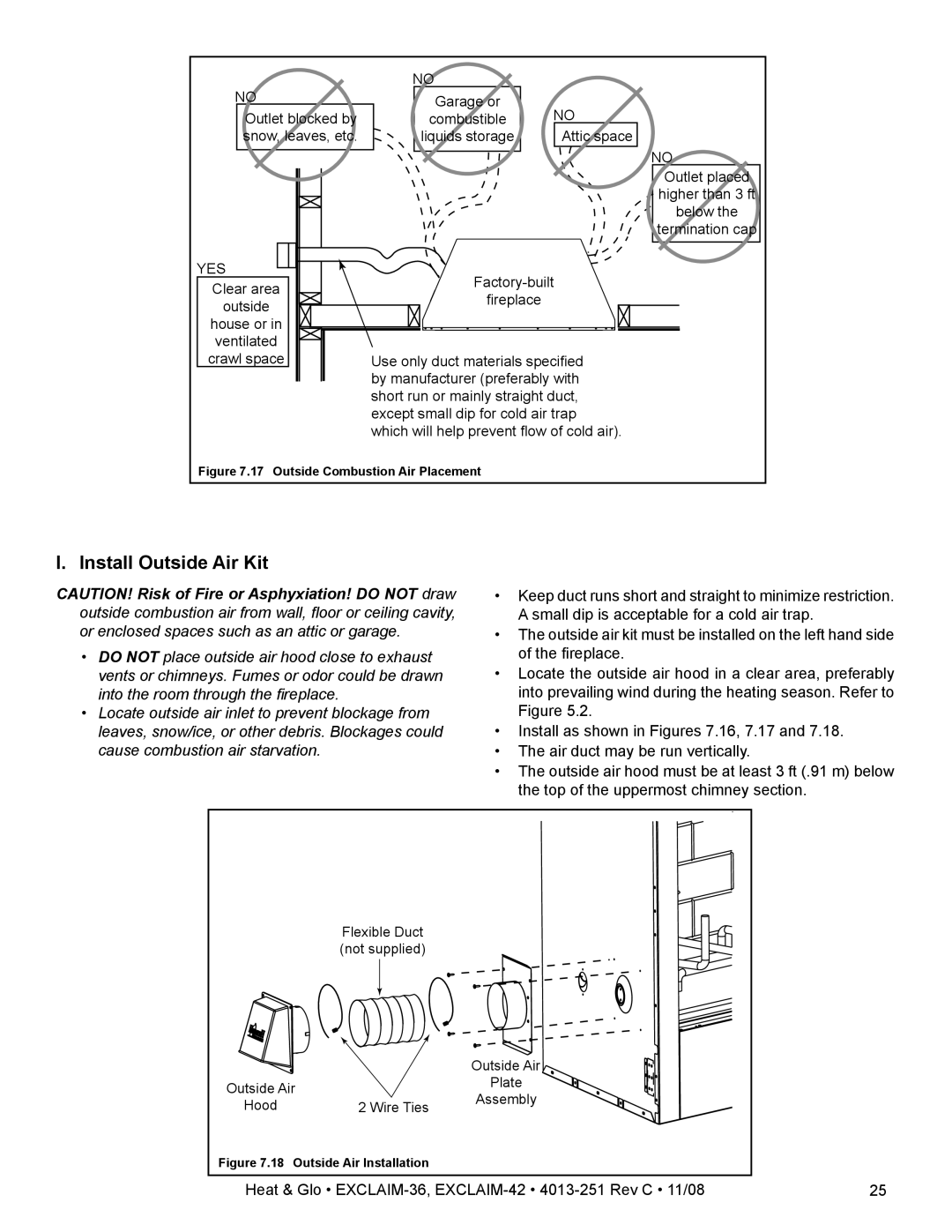
NO | NO |
|
Garage or | NO | |
Outlet blocked by | combustible | |
snow, leaves, etc. | liquids storage | Attic space |
NO
Outlet placed
higher than 3 ft
below the
termination cap
YES | ||
Clear area | ||
fireplace | ||
outside | ||
| ||
house or in |
| |
ventilated |
| |
crawl space | Use only duct materials specified | |
| by manufacturer (preferably with | |
| short run or mainly straight duct, | |
| except small dip for cold air trap | |
| which will help prevent flow of cold air). |
Figure 7.17 Outside Combustion Air Placement
I. Install Outside Air Kit
CAUTION! Risk of Fire or Asphyxiation! DO NOT draw outside combustion air from wall, floor or ceiling cavity, or enclosed spaces such as an attic or garage.
•DO NOT place outside air hood close to exhaust vents or chimneys. Fumes or odor could be drawn into the room through the fireplace.
•Locate outside air inlet to prevent blockage from leaves, snow/ice, or other debris. Blockages could cause combustion air starvation.
•Keep duct runs short and straight to minimize restriction. A small dip is acceptable for a cold air trap.
•The outside air kit must be installed on the left hand side of the fireplace.
•Locate the outside air hood in a clear area, preferably into prevailing wind during the heating season. Refer to Figure 5.2.
•Install as shown in Figures 7.16, 7.17 and 7.18.
•The air duct may be run vertically.
•The outside air hood must be at least 3 ft (.91 m) below the top of the uppermost chimney section.
Flexible Duct (not supplied)
|
| Outside Air | |
Outside Air |
| Plate | |
| Assembly | ||
Hood | 2 Wire Ties | ||
|
Figure 7.18 Outside Air Installation
Heat & Glo • | 25 |
